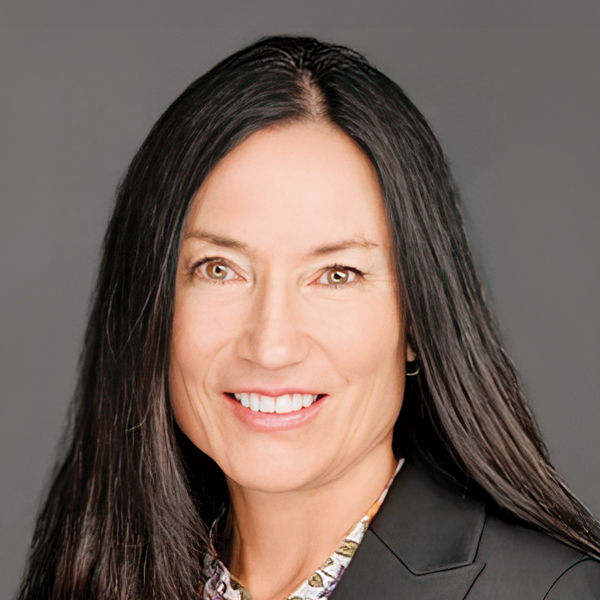As U.S. housing affordability reaches near-crisis proportions, the dream of homeownership seems further out of reach for low- and moderate-income consumers now more than ever. In fact, only 40.5% of all new and existing homes sold from April through June 2023 were affordable to households earning the U.S. median income of $96,300, according to an index released this past August by the National Association of Home Builders and Wells Fargo.
There are limits to how much mortgage lenders can do to change this picture. But they owe it to their clients to leave no stone unturned when it comes to conquering today’s affordability challenges. And one of the biggest stones to look under is the U.S. Department of Agriculture’s single-family home loan program, one of the few agency options for 100% financed home purchases.
“Rural housing markets have not been immune to the challenges of today’s difficult climate. In fact, the challenges have been more severe in some ways.”
For many potential homeowners who have been pushed to the periphery of urban and suburban areas, the USDA program serves as a critical lifeline for achieving homeownership. And for lenders, USDA loans represent an opportunity that can catalyze growth in a difficult market. But because they were often overlooked when interest rates were low, many lenders may not appreciate just how valuable USDA loans are right now. The program can be leveraged to successfully expand business in rural areas while helping more borrowers bridge the affordability gap.
Eroded confidence
The dual sting of escalating mortgage rates and a scarcity of inventory are two of the biggest reasons why housing affordability is so low. Despite some promising signs in the homebuilder market, new homes aren’t coming to market fast enough to ease a U.S. housing shortage that’s at its highest level since World War II.
Meanwhile, interest rates remain higher than they’ve been in two decades. New homebuyers have found themselves committing hundreds of dollars more per month to their mortgage payments — and tens of thousands of dollars more over the life of their loan — compared to those who entered the market only a year prior.
While the overall U.S. economy remains healthy, these factors are severely undermining confidence in the housing market. For example, a recent Gallup poll revealed that a mere 21% of U.S. adults believe now is the best time to purchase a home — the lowest share since Gallup began tracking this data in 1978.
Rural housing markets have not been immune to the challenges of today’s difficult climate. In fact, the challenges have been more severe in some ways. Over the past few years, the COVID-19 pandemic and the resulting increase in remote work pushed many urban and suburban families to rural communities, causing home prices to rise. In January 2021, Redfin reported that housing inventory in rural areas fell by a record 44% year over year while the median sales price in these areas rose by 16% to reach more than $290,000.
In such an environment, it’s critical for mortgage lenders to harness every potential sales opportunity. This means using new tools to engage with a broader demographic of borrowers and more effectively serving the needs of low- and moderate-income homebuyers. And there are few tools that are better to use than USDA loans.
Extensive eligibility
By providing 100% financing, USDA loans have been used since 1991 to open the doors to homeownership for rural Americans who might otherwise be deterred by the higher costs and downpayment requirements of traditional mortgages. Still, many people believe USDA loans are primarily aimed at farmers, when the reality is that they’re most often used for single-family homes in smaller towns and communities that aren’t within immediate reach of larger metropolitan areas.
Even more attractive is the USDA’s generous definition of “moderate income” as qualifying criteria. Under the agency’s guidelines, a borrower can earn up to 115% of their area’s median income and still qualify for a loan. This is great news for borrowers who live in smaller communities and have found their wages have not kept pace with housing prices.
USDA loans aren’t for everybody. The idea behind the loan program is to encourage the development of rural and semirural communities that are typically underserved by traditional financing options. To be eligible for financing, a borrower must buy a home within a USDA-designated area. These areas are located outside major cities and have 35,000 residents or less. But collectively, this is a huge area.
The USDA also requires all first mortgages to meet specific standards of quality, and the home being purchased must be used as a primary residence. There’s no property size limit. The home must be structurally sound, fully functional and meet specific safety requirements, such as a strong foundation, adequate roofing, and working systems like heating, cooling, plumbing and electricity.
“The goal is not just to ensure that loans are originated and underwritten to meet USDA standards but also to create a path to homeownership that’s specifically tailored to a rural borrower’s unique needs.”
The agency also offers a renovation loan option, which allows consumers to borrow 100% of the purchase price plus an additional 2% of the home’s value for repairs. This option is specifically for low-income families, or people who earn less than 50% of the area’s median income.
Assuming that a lender can meet these requirements, USDA loans are a prime opportunity for originators to broaden their borrower base and serve a more diverse range of clients who are struggling with today’s affordability challenges. But for lenders and originators to build a successful USDA loan program, they need the right resources and partnerships.
Valuable partnerships
Like any other government lending program, the USDA requires lenders to adhere to specific guidelines, ensuring that every loan is originated and underwritten responsibly. Lenders must be approved to originate USDA loans but may choose to collaborate with a secondary market partner to broaden their reach. Partnering with community housing organizations is also ideal.
The best partner is one that provides the necessary expertise, support and understanding of USDA loans to help lenders navigate the process effectively on behalf of their clients. The goal is not just to ensure that loans are originated and underwritten to meet USDA standards but also to create a path to homeownership that’s specifically tailored to a rural borrower’s unique needs and circumstances.
When it comes to working with underserved borrowers in rural areas, it’s important to build relationships with correspondent lenders. This will ultimately enable clients to create generational wealth through home equity while driving sustainable economic growth in rural communities.
To be sure, housing affordability is not likely to get easier in the months and years ahead. This is why it’s critical for correspondent lenders to find more creative ways to help consumers overcome homeownership hurdles. The USDA loan program presents a significant, untapped market that many lenders can leverage to offset some of the market instability while delivering a meaningful and positive impact on rural communities across the country.
In short, USDA loans represent a golden opportunity for lenders to make a difference during today’s housing affordability crisis. And there’s no better time to start than now. ●
Author
-

Miki Adams is the president of CBC Mortgage Agency, a nationally chartered housing finance agency and a leading source of downpayment assistance for first-time homebuyers. She joined the Cedar City, Utah-based company in November 2016 as executive vice president and was promoted to president in January 2021. She has 30 years of mortgage lending experience and has managed companies through calm and tumultuous markets. Her background includes credit and collateral underwriting, secondary marketing and portfolio asset management, regulatory compliance, and regulatory audit and examination management.




